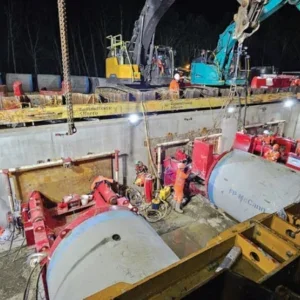This month T&TI focuses it’s attention on TBMs. One particular subject that seems to stand out in this broad topic is the increasing use of TBMs for the construction of long tunnels. With vast high speed rail networks appearing the popular method of choice for transporting freight and passengers in the modern era, especially throughout Europe, it seems the huge amounts of tunnelling work needed to facilitate these routes could prove vital for our industry. And it’s not just transport tunnels that are becoming longer either. Increasingly, TBM driven water tunnels are being designed to huge specifications.
But before we get carried away with thoughts of decades of possible work, we should look back at some of the lessons learned from previous, less successful attempts at long TBM tunnel projects in the hope of an important reality check.
Shani Wallis’ article ‘Long Distance TBM operations on account’ on p22 includes the start of a table of projects featured in T&TI longer than 5km that have seen the best and worst in TBM excavation experiences. It comes as no surprise that virtually all of the tough jobs have featured the tunneller’s oldest nemesis – unexpected ground conditions!
Surely by now, the one thing we know to expect is the unexpected, but is there more we can do to minimise the risk of surprise? Millions is spent on technological advances for TBMs and this is to be encouraged. But are we focusing on the machines at the expense of being able to predict more specifically the actual ground they are to work in?
Would it be sensible to perhaps invest more heavily in advances in the ‘new’ art of tunnel seismic prediction and bolster our knowledge of resistivity image profiling? These are just two methods, and I’m sure there will, in time, be new techniques available. Or maybe just spend more on site investigations to pull together a really valid geological section of the tunnel alignment?
All this said, predicting ground conditions is still something of a black art, and problems will happen. Boreholes just meters apart can miss some serious geological discrepancies. So, it is also vital to have a proper contingency plan in place at the very start of any project. This is possibly the only way to truly minimise some of the crippling delays that result from running into adverse conditions. Really it is just a matter of having as much in place at the start of a project as possible, and leaving the absolute minimum to chance.
Fore-warned is forearmed and surely more investment at the start could well save costs in the long run.
Tris Thomas






